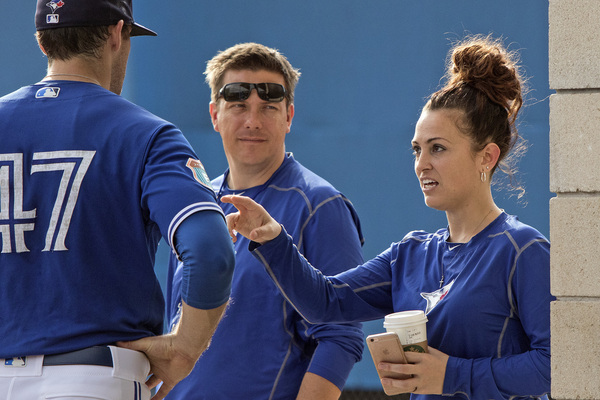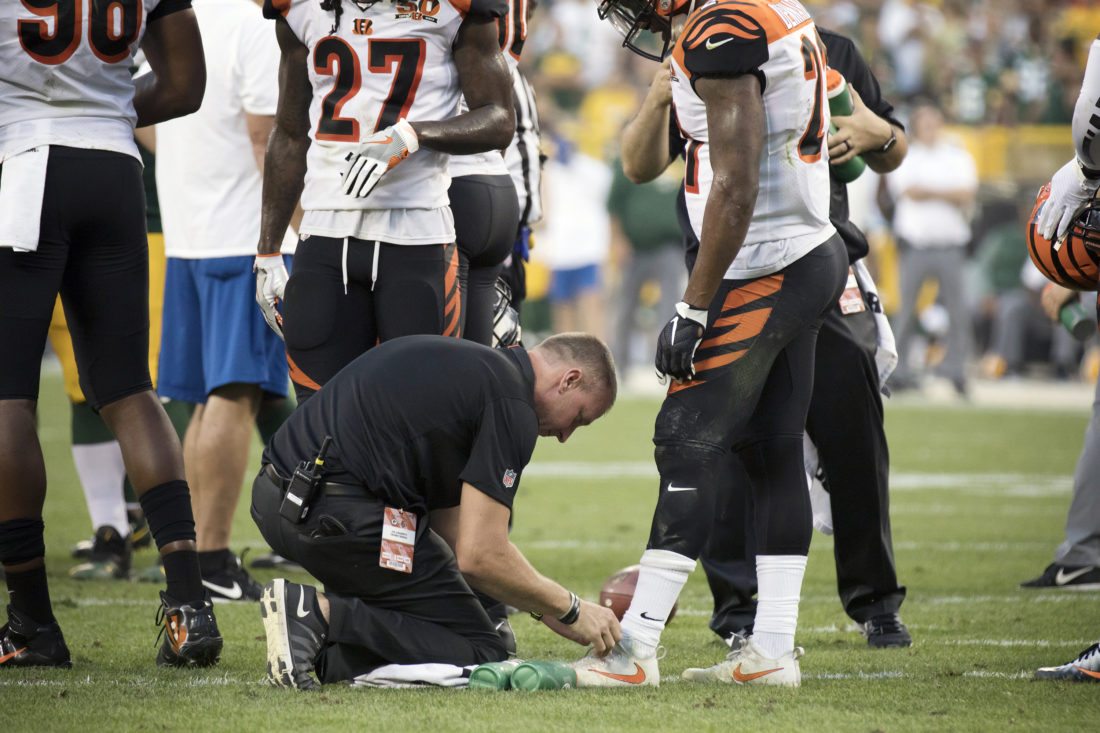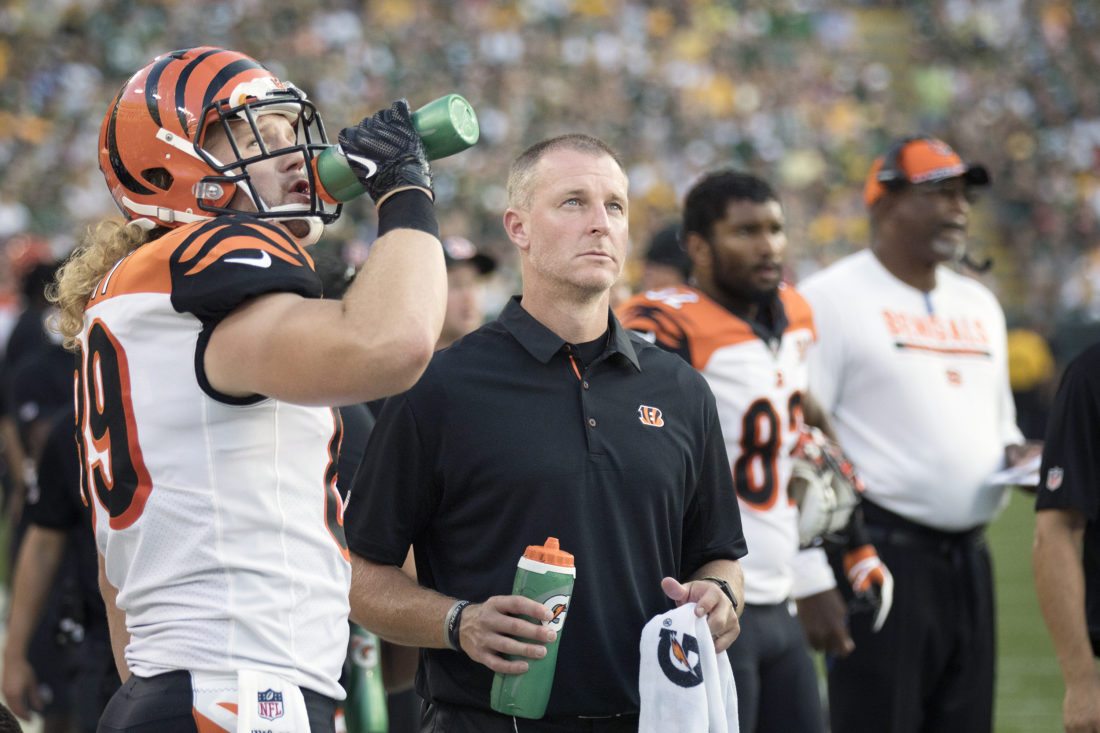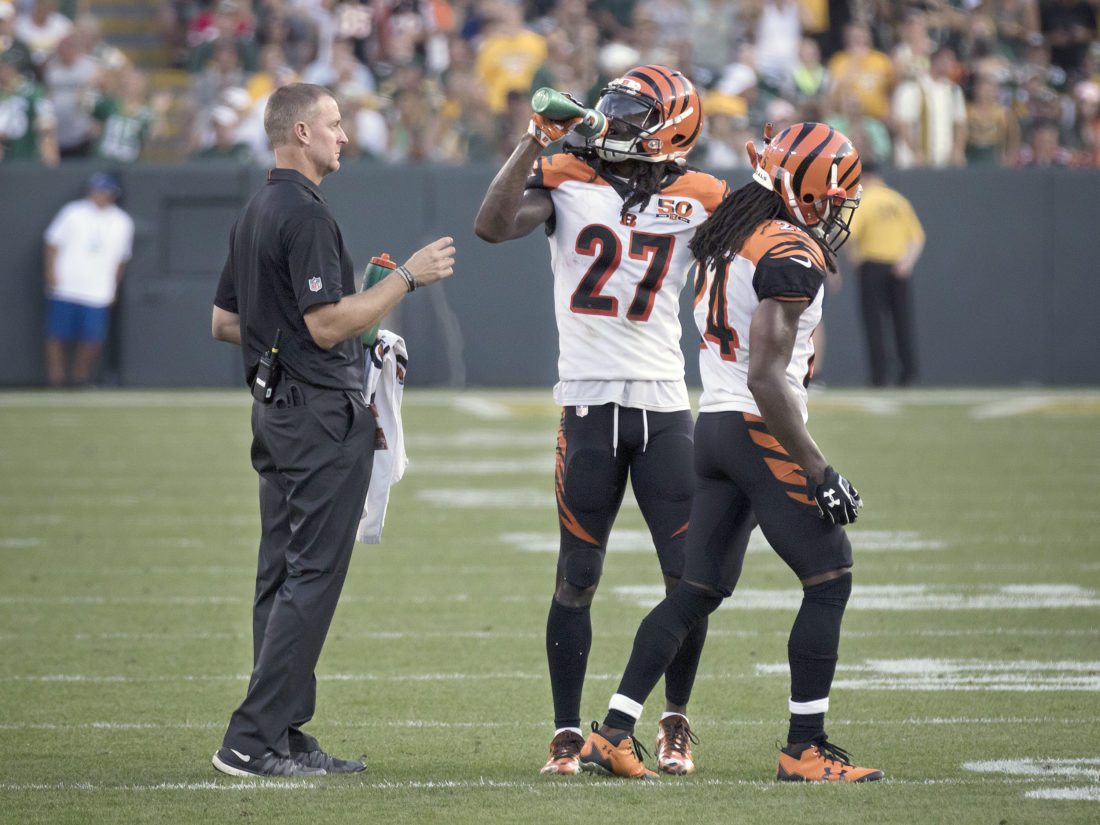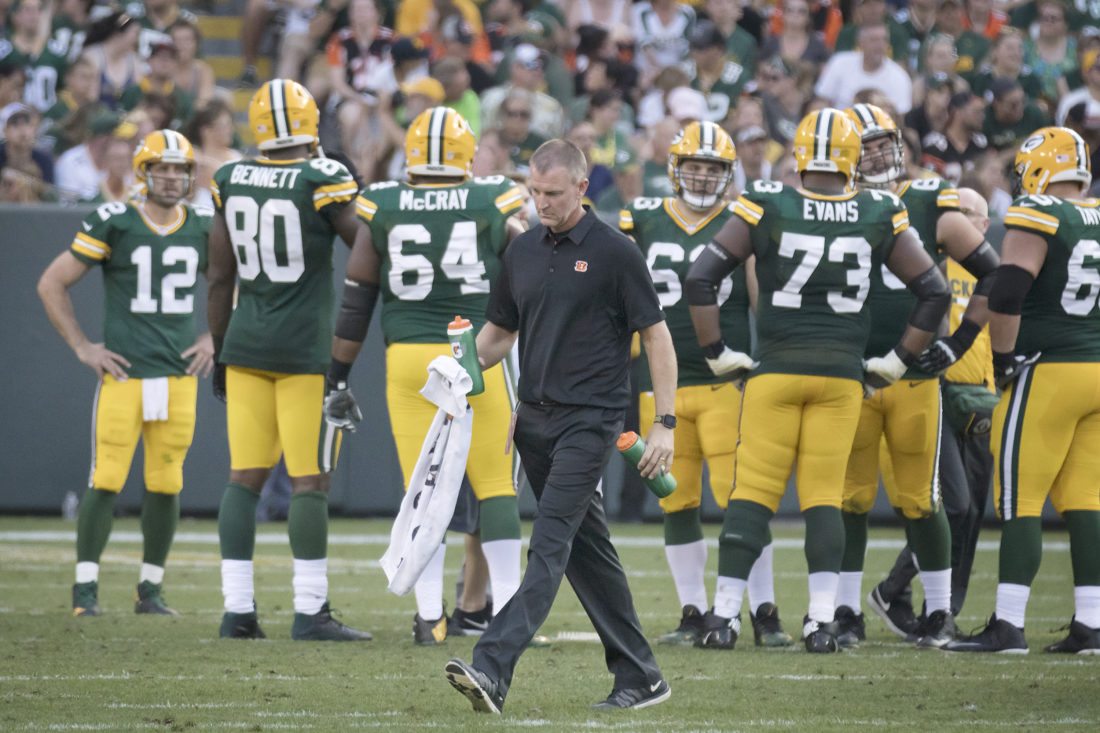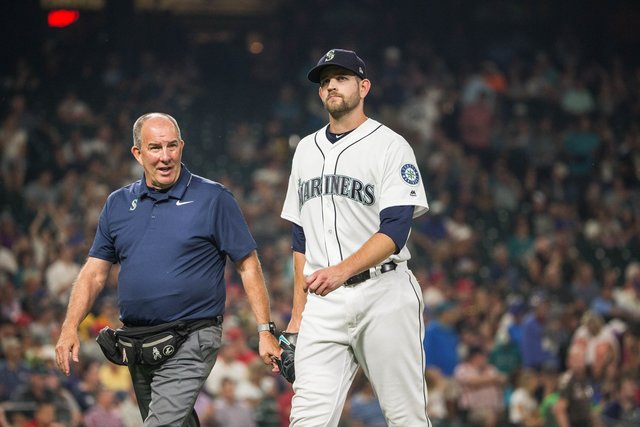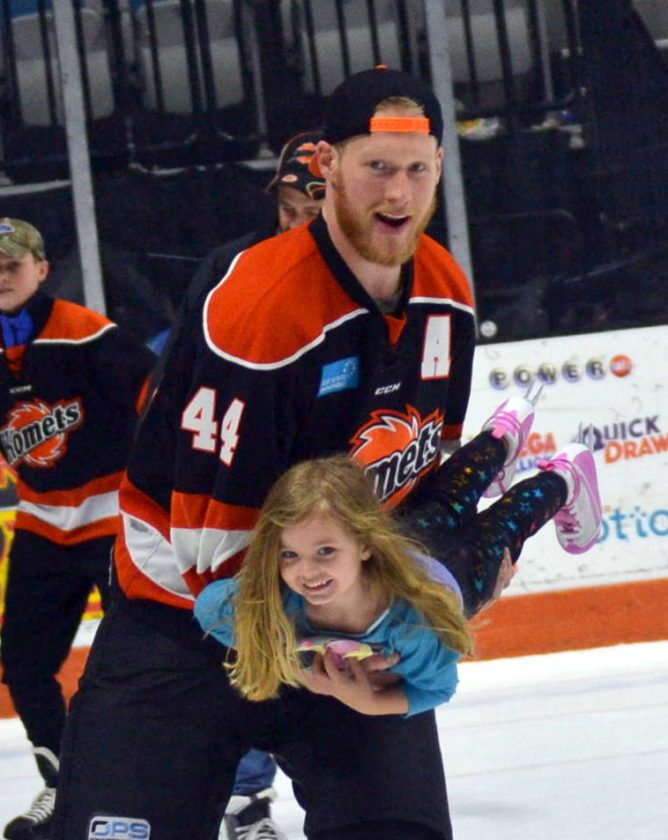
Article reposted from News Sentinel
Author: BLAKE SEBRING
With a smile that lights up her eyes and a giggle that is a gift from God, 4-year-old Makayla Willett has some of Fort Wayne’s toughest and strongest athletes willing to do just about anything for her. She also might be more resilient than all of them.
Makayla’s dad is Fort Wayne Komets athletic trainer Matt Willett so she’s around the rink and the team frequently, but one place the players never expected to find her was at Lutheran Children’s Hospital. When the team made their recent annual Christmas visit, Makayla and her mom and dad were there for what to them has become a normal, weekly visit, but it’s something that would terrify any other parents.
Makayla deals with Idiopathic Thrombocytopenia Purpura (ITP), a disease that afflicts between 4.3 and 5.3 kids per 100,000 and limits her production of platelets which are critical to clotting and stopping bleeding. A normal count is 150,000 to 450,000, but Makayla’s counts have bounced between as low as 4,000 and as high as 73,000.
There’s no consistency so she suffers horrific bruises. If she runs into the corner of a couch, instead of a normal 7-to-10 day window for a bruise, she’ll have a deep, dark bruise for at least three weeks, and simple wounds like a paper cut or a hangnail can be serious challenges.
RELATED: Platelet Disorder Support Association
“A normal cut that would take 30 seconds to stop on any child, could take five-to-10 minutes for her,” Matt Willett said. “When you go for a blood draw, the puncture wound bleeds for 10 minutes and instantly bruises, when in most kids you never even see the stick point. She smashed her finger between a chair and a table at school, and her finger turned completely black.”
Maybe obviously, at times medical personnel have questioned possible abuse until the parents have explained their situation.
The biggest worry is that she somehow suffers a head wound because that could require a quick emergency room visit. A bloody nose was once a 10-minute affair.
“This is just the roller coaster we get to ride,” Jenny Willett said calmly. “It’s normal for us at this point.”
No one knows the cause, though the Willetts have heard four or five possibilities from doctors who are sometimes educating themselves about the disease as much as her parents. It’s not thought to be hereditary or genetic, but her parents have searched their own medical records and memories to see if there were any similar incidents when they were children.
One of Makayla’s unique factors she didn’t experience any symptoms until she was 3 years old when an Aug. 16, 2016, lab test showed her platelets had dropped to 11,000. An infusion pushed them back to 32,000 and the week after that the numbers went to 271,000 but then dropped back to 113,000 to 96,000 to 45,000. By December 2016 they had rebounded to 132,000, but by March they had dropped again to 36,000. Recently, they were recorded at 73,000, but last week they were all over the place.
The Willetts have a standing lab order at Dupont Hospital for weekly blood draws to check Makayla’s platelet count. Her current treatment consists of weekly injections which the Willetts do themselves at home. There are nearly daily calls to the office of Dr. Lubua Ahmed at Lutheran Children’s Hospital to check lab results, adjust the dosage or ask for advice. Since August, Makayla and her parents have visited the doctor’s office 15 times.
Makayla knows the routine so well she’s usually ahead of the procedures, such as pulling up her hair so her ears can be checked. Last week was a rough one, but she powered through as if getting poked and taking infusions were normal.
“She’s been to more doctors appointments in four years than I have in 34,” Matt Willett said. “I can’t even count how many doctors visits she’s been to.
“A lot of it is if mom and dad freak out about it, she freaks out about it. Jenny and I have to maintain as much calm as possible. As much as we want to cry, throw things and get mad, you have to maintain a level head.”
But that must be impossible. How do you try to protect a 4-year-old with the usual incredible energy and invulnerable attitude? There’s no cocoon to place her in, no way to avoid everything that can happen.
So the Willetts have chosen to let Makayla experience life as normally as possible, trusting in their faith that God will protect her and guide them. As they see it, it’s really their only option.
“We’re beyond questioning, `God, why are you doing this to us?’ “ Matt Willett said. “We’re at the point now that it has brought us closer in our faith and in our family, and now it’s about how can our faith help us in the healing process as well? You trust that God is going to get you through these challenges. That’s what we’re trying to teach her.”
And they rely on friends to give them a boost, such as the Komets who have been very supportive. The players all know the situation and continually ask Willett for updates. Her favorite player is, of course, Cody Sol who always responds to her with a high five. When she was told the guys would be at the hospital for the Christmas visit at the same time, her eyes just lit up.
“The guys are absolutely amazing,” Jenny Willett said.
“She just eats it up,” Matt Willett said. “She’s got them all wrapped around her little finger. To have the support and the understanding from your employer or who you work with the most helps tremendously. For being how much I’m not home, they understand that the time we do get with our families is precious.”
Both the Willetts grew up in Huntington, and the proximity to both their families was a big reason why Matt took the Komets job last summer through Optimum Sports Performance. He previously worked at St. Joe College in Rensselaer before it closed following last school year.
They’ve needed every ounce of that support and know they will likely need more.
“We don’t want her to feel like she’s different than anybody,”Matt Willett said. “We want her to have as normal enough childhood that she can despite this.”
And those smiles and the giggles make everything worth it.




